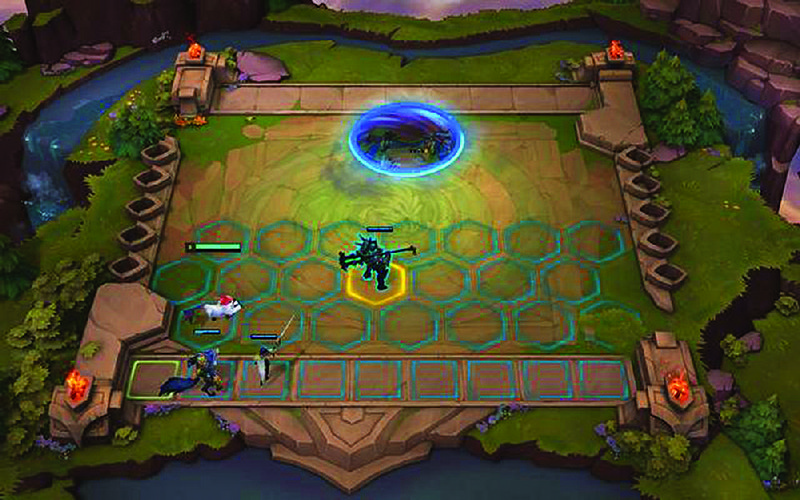Title: Teamfight Tactics
Platform: Windows, Mac
Cost: Free
Rating: Ages 10+ for fantasy violence
Score: 7 out of 10
Amid the burgeoning new “Auto Chess” genre, the category standout is Teamfight Tactics by League of Legends creator Riot Games.
Last time, I took a look at Dota Underlords, the auto-battler that uses characters from the multi-player online battle arena game Dota 2. And just like how Dota 2 consistently lags behind LoL in popularity, the same goes for the nearly identical auto-battlers, with TFT having about four times the popularity of Underlords.
Mechanically, TFT and Underlords are very similar. In both games, players compete in a round-robin style tournament, buying heroes before each match and deploying them onto a grid. As players win and lose, they earn more gold coins, which let them buy stronger units.
Buying three of the same champion creates a stronger, two-star version of that hero. Getting three two-star versions of a champion creates an even more powerful three-star unit. Heroes have traits and earn bonuses when deployed with other heroes that share those traits, such as increased damage or faster attacks. While heroes fight automatically, positioning is important and can change how the units behave. If you’ve learned to play one auto-chess game, you know how the other one works.
I do feel though that TFT is quite a bit more complex, because of how equipment combines and changes form into something more powerful. In Underlords, each unit can only wear one piece of equipment, and for the most part, that equipment was not game-deciding. The units themselves were more important. In TFT, a character can equip up to three items, and any two Tier 1 items, when equipped to the same unit, will synthesize into a new, more powerful Tier 2 item. On the right units, this can lead to overwhelmingly powerful combinations, such as letting a unit that normally targets a single enemy deal splash damage to the whole enemy team, while simultaneously healing itself for a percentage of the total damage dealt.
Some units are so overpowered they’re almost broken — but that’s OK, because like Underlords, TFT also is currently in “beta” — meaning that updates, changes and tweaks will happen continually, from changing item interactions to adding new champion units entirely.
Graphically, I feel that Underlords is far superior to TFT, but what Teamfight Tactics lacks in polish it makes up for by piggybacking off an already more popular parent game.
The real struggle in TFT is the randomness of which champions will be available to you, and which equipment items will drop during rounds against NPCs. It can be pretty frustrating to need a particular unit to complete your team’s composition and not have it ever become available to buy.
The most recent patch has made it a little more certain to get items from the NPC rounds — I can attest that it felt pretty frustrating to see an opponent had already received seven items by Round 4 when I’d only acquired two. TFT is much more of an arms race than Underlords or other competitors. Getting the right combination of items is probably the most crucial part of gameplay.
But that randomness is here to stay, according to a blog post by developer Riot.
“To be up front about this, we think RNG is good for Teamfight Tactics in the long term,” gameplay producer Richard Henkel said, referring to random number generation. “It prevents every game from feeling the same, and makes high moments and stories when you happen to get everything you want.”
A full tournament goes by pretty quickly — perhaps about 30 minutes in total, with a new match occurring about every minute. The latest patch makes a whole host of changes, not least of which is ranked play. Place in the top four in a tournament and move up in rank, place in the bottom four and move down.
Perhaps the biggest difference between TFT and its competitors, though, is that battles are actually fought head to head. In Underlords, battles are against clones of the other player’s army, not the human players themselves. Each battle simulates a fight between your army and a random enemy player. There’s a pretty good reason for it — it prevents win-trading, for example, that would boost a friend’s rank artificially high by having someone lose on purpose. But it also prevents friendly rivalries and shared experiences, and that social interaction is also good for the game.
I definitely recommend checking out both games (as well as their competitors), and seeing which entry appeals more to you; despite the randomness inherent in the game, there are no bad choices here.

